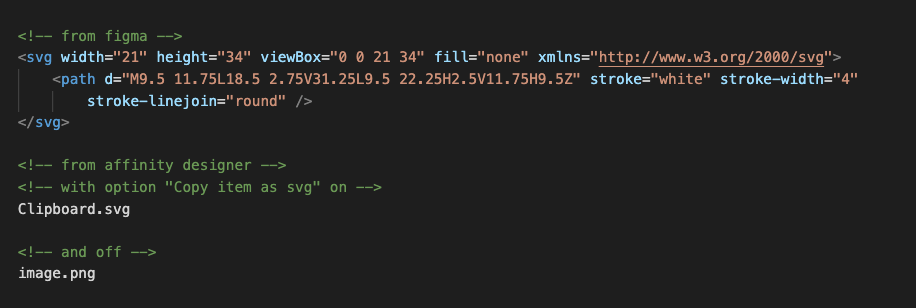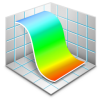Search the Community
Showing results for tags 'Code'.
-
Hello, Recently on checking the log in the Host Intrusion Protection System of my firewall (Vipre), it is indicating Affinity has at some point attempted to inject code and references Affinity crashpad_handler.exe pad. Curious as to what this is and why the firewall is blocking it. It has occurred with Publisher, Photo and Designer, all are the latest versions. It's not like it happens all the time, and from the description it would seem it happens if there is a program crash. Thank you very much, Jim Avedisian -email address removed-
-
Hi there, when I write code, I often put SVG code into my HTML. When i copy from figma "as svg", I can paste the svg code, when I do the same in affinity designer, it only pastes the word "Clipboard.svg". Is there any option to copy the actual svg code?
-
Hi guys, I can't find a field for entering hex colour codes in Publisher. Same problem Affinity Photo and Designer. Someone can help?
-
Affinity Designer is an maxing tool.. I mean I really enjoy using it and just want to fully move my whole workflow to designer. But there are a few things still holding me back. Affinity Designer has a great tool called constraints that can be used for web design when testing different screen sizes of resizing screens in general. But what might make this even cooler might be adding a separate personal for everything web design. Just like with Adobe Muse or Webflow. Having the ability to not just design but to also export that design as html to be used without messing with the code. I believe a lot of people like me would appreciate this.
-
I bought Affinity Designer after using the trial version. I uninstalled the Trial version, re-booted then installed the purchased version after downloading it from my account page of Affinity Serif download page. I launched Affinity Designer but never did it ask me for the Serial Key and email address that I used to purchase it. I opened Reg-Edit in Windows 10 and went to : \HKEY_LOCAL_MACHINE\SOFTWARE\Serif\Affinity\Designer\1 It shows here that I am using the Trial version of Affinity Designer and not the purchased version. Under 'Help - About' section in the Menu of Affinity Designer I see no 'Registered to...' or my License Key. Within Affinity Designer I see no option anywhere to enter the purchased license key, so how am I supposed to use the purchased product with the License Key?
-
Hello guys. I left this feature request in the image-line forums, for the music production software FL Studio, so, I would love to have the following feature in Affinity as well. It's the ability to program commands or extensions like programs like Microsoft Office, Adobe Flash/Animate, Microsoft VS Code, etc. It would be really useful to be able to create commands to automatize tasks, in either Python, C# or Javascript language. (I'd said mostly C#, but Python would be good because of its simple syntax). This will benefit greatly the Affinity/Serif developers, because they would only need to focus on fixing bugs mostly, and us community programmers could contribute by creating these commands and extensions so, the amount of features request should decrease. For example, one crucial extension would be we type a text in a input textfield/dialog, and it splits that text by the spaces and create {n} amount of textfields with the split words. Also, search layers by layer description/name/title or by another search query like hidden, locked, blend mode, or layer containing {x} FX, or search all layers of type textfield, or search all pixel layers, etc. There are so many tools we need to automatize task that us programmers could easily implement. Can someone from Affinity confirm if there is any plan of including this feature, or at least, if they would at least consider implementing it in like version 2.x? Thank you!
-
Hello, as a Designer & Dev (Game & Web) I usually need SVG's quiet often, I usually need to run those SVG's through a Converter (SVG => to Meshes). But now the Problem beginns, for example, if I use curves with brushes on them, then AD converts those brushes to simple images only (I looked through the exported code of the svgs). This is really bad news for me, Illustrator doesn't do that, Illustrator actually converts those brushes (even complex ones) entirely to SVG valid data. Is there a plan to improve the AD SVG Export Options anytime soon to make this work? If this isn't on the AD Roadmap anytime soon, is there a alternative way to do it then (e.g. Vectorizing those Brush Curves)? I am also missing vectorization of curves and other objects in AD in general, that would help out by quiet a lot. [EDIT:] Seems like most AD Brushes are more or less Images (not the simple standard brushes), what makes it impossible to export it as valid SVG Data / Vectors, except if AD has some smart vectorization features in the future. Why are even Image Brushes allowed in AD? It's the opposite concept of a Vector Application, just wondering. Kind regards, DK
-
Hi there, I hope you can help me out to understand this. Apparently, for some reason, my code on the top bar of the RGB colours have more digits than usual. Whenever I double click on the colour panel on top of the layers' panel, the code appears correct, but as you can see on the image attached, on the other place I am seeing too many digits.... If I try to copy a normal 6 digits RGB hex number on there, it transforms it to a different code and colour. Thank you.
-
The SVG Export is very overloaded, overcrowded, ...extremly suboptimal. I'll give you an easy sample: Take the Union Jack from the Wikipedia. It has 522 Bytes. That's the code <svg xmlns="http://www.w3.org/2000/svg" viewBox="0 0 60 30" width="1200" height="600"> <clipPath id="t"> <path d="M30,15 h30 v15 z v15 h-30 z h-30 v-15 z v-15 h30 z"/> </clipPath> <path d="M0,0 v30 h60 v-30 z" fill="#00247d"/> <path d="M0,0 L60,30 M60,0 L0,30" stroke="#fff" stroke-width="6"/> <path d="M0,0 L60,30 M60,0 L0,30" clip-path="url(#t)" stroke="#cf142b" stroke-width="4"/> <path d="M30,0 v30 M0,15 h60" stroke="#fff" stroke-width="10"/> <path d="M30,0 v30 M0,15 h60" stroke="#cf142b" stroke-width="6"/> </svg> Open it with Affinity Designer. Export it as SVG. It becomes 1528 Bytes. That nearly 3 times more. And the SVG code is just messy. Another sample: Take the Stars and Stripes from the Wikipedia. It has 899 Bytes This is the code <?xml version="1.0" encoding="UTF-8"?> <svg xmlns="http://www.w3.org/2000/svg" xmlns:xlink="http://www.w3.org/1999/xlink" width="1235" height="650" viewBox="0 0 7410 3900"> <rect width="7410" height="3900" fill="#b22234"/> <path d="M0,450H7410m0,600H0m0,600H7410m0,600H0m0,600H7410m0,600H0" stroke="#fff" stroke-width="300"/> <rect width="2964" height="2100" fill="#3c3b6e"/> <g fill="#fff"> <g id="s18"> <g id="s9"> <g id="s5"> <g id="s4"> <path id="s" d="M247,90 317.534230,307.082039 132.873218,172.917961H361.126782L176.465770,307.082039z"/> <use xlink:href="#s" y="420"/> <use xlink:href="#s" y="840"/> <use xlink:href="#s" y="1260"/> </g> <use xlink:href="#s" y="1680"/> </g> <use xlink:href="#s4" x="247" y="210"/> </g> <use xlink:href="#s9" x="494"/> </g> <use xlink:href="#s18" x="988"/> <use xlink:href="#s9" x="1976"/> <use xlink:href="#s5" x="2470"/> </g> </svg> Open the SVG with Affinity Designer and export it as SVG. It becomes 13.925 Bytes! That 15 times more!! That caught my breath. Let's try something more complex: the flag of Portugal. (13.160 Bytes) And export it... Result: 53.139 Bytes !!! The files get fat and unreadable. That's totally unacceptable. And that were just simple samples.




